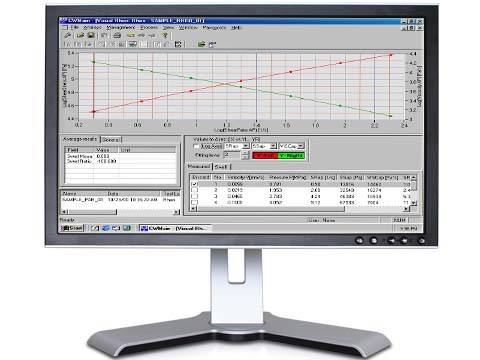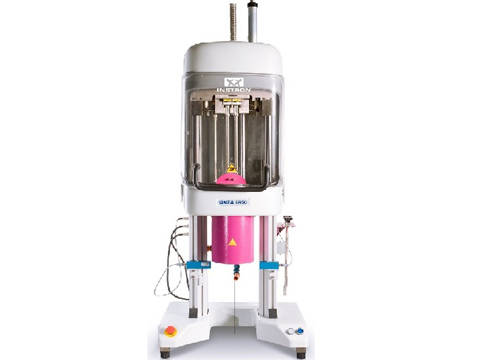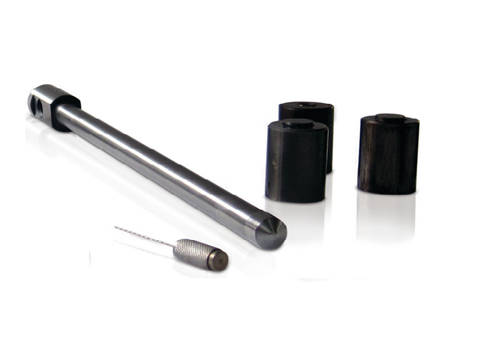Heat-cured elastomers/silicone materials have a variety of different applications - ranging from automotive to biomedical - thanks to great characteristics including: flexibility and durability, chemical resistance, fatigue and compression resistance, sealing and insulating properties. Depending on the specific chemistry and compounding, the uncured material can be processed by extrusion, injection molding, or compression molding, and cured by different methods. Rheology plays an important part in characterizing these materials and reproducing the flow conditions of the industrial process.
We were asked to test two types of silicone materials designed for heat curing. This request was to understand their processability and to check the feasibility of testing these materials at room temperature with a capillary rheometer without inducing a curing reaction. We used a CEAST SR50 Twin Bore Capillary Rheometer (15 mm bore barrel diameter), with a 40 kN load cell mounted at the top of each piston and a barrel-mounted 100 MPa pressure transducers positioned slightly above the entrance of capillary dies. The instrument was equipped with two capillary dies (1 mm diameter and 20 mm length, flat entrance) in order to run the two samples simultaneously, looking for any difference in the response in a shorter time. We used CEAST VisualRHEO software to analyze the rheological results. Rheological tests, in accordance to ISO 11443 and ASTM D3835, were performed at room temperature by applying constant shear rate steps (from 10 s-1 – 1000 s-1) and measuring the pressure. Tests were repeated several times for each sample to evaluate the repeatability of results.
The software calculated and plotted full rheological curves (viscosity [Pa*s] vs shear rate [s-1]), with both samples showing a non-Newtonian (shear thinning) behavior. The viscosity range measured for the first sample was between 18000 Pa*s and 300 Pa*s, whereas the second sample gave values between 9000 Pa*s and 200 Pa*s in the same range of shear rate. The latter showed some instability of the flow at 10 s-1 with pressure fluctuations. All the curves for each sample were perfectly overlapping, demonstrating good repeatability of results. However, significant differences could be observed between samples, hence the utility of the rheometer in discriminating different process behaviors and relating them to different formulations. The simple, off-line rheometer tests were able to indicate that the first material was better suited for extrusion at room temperature.


